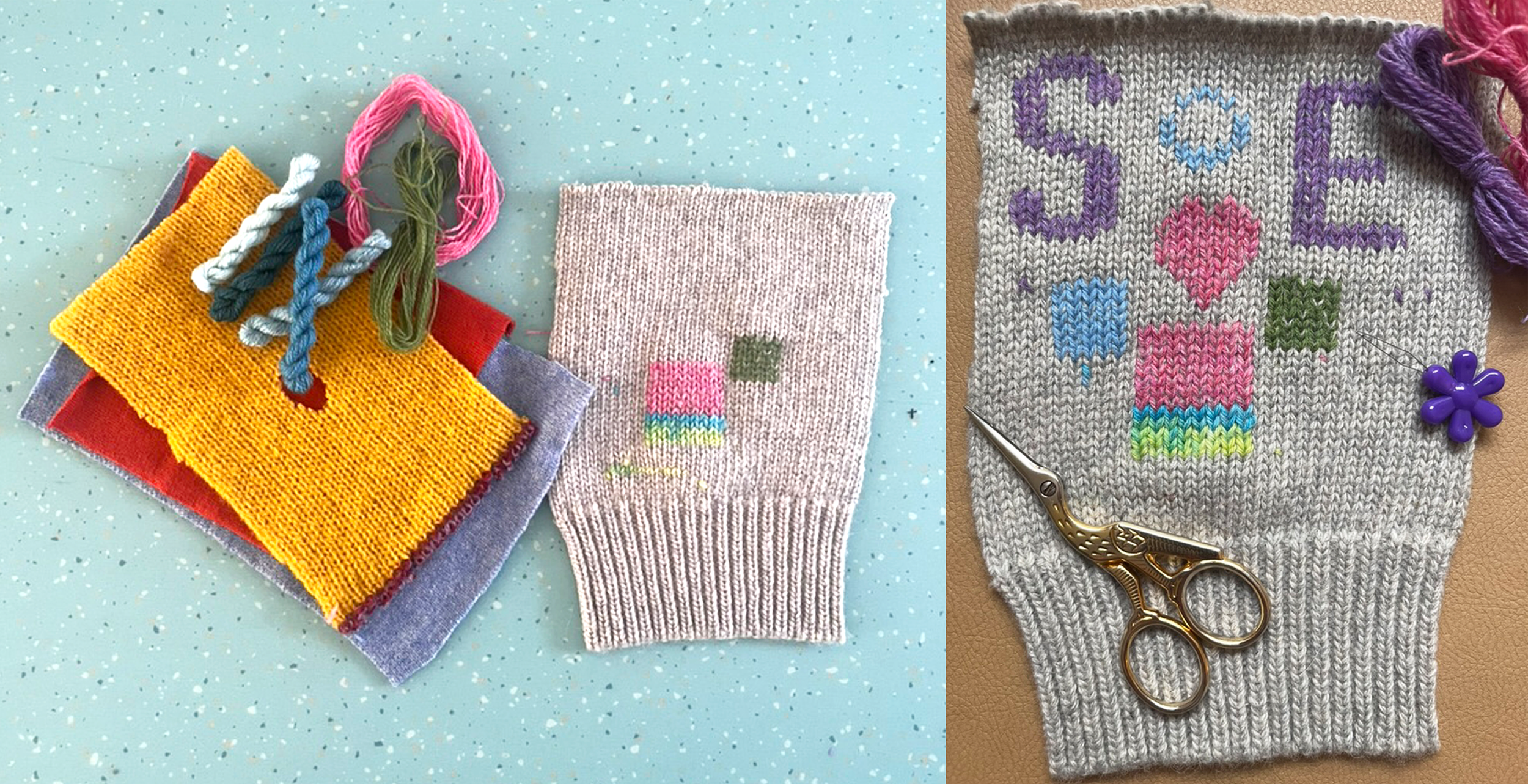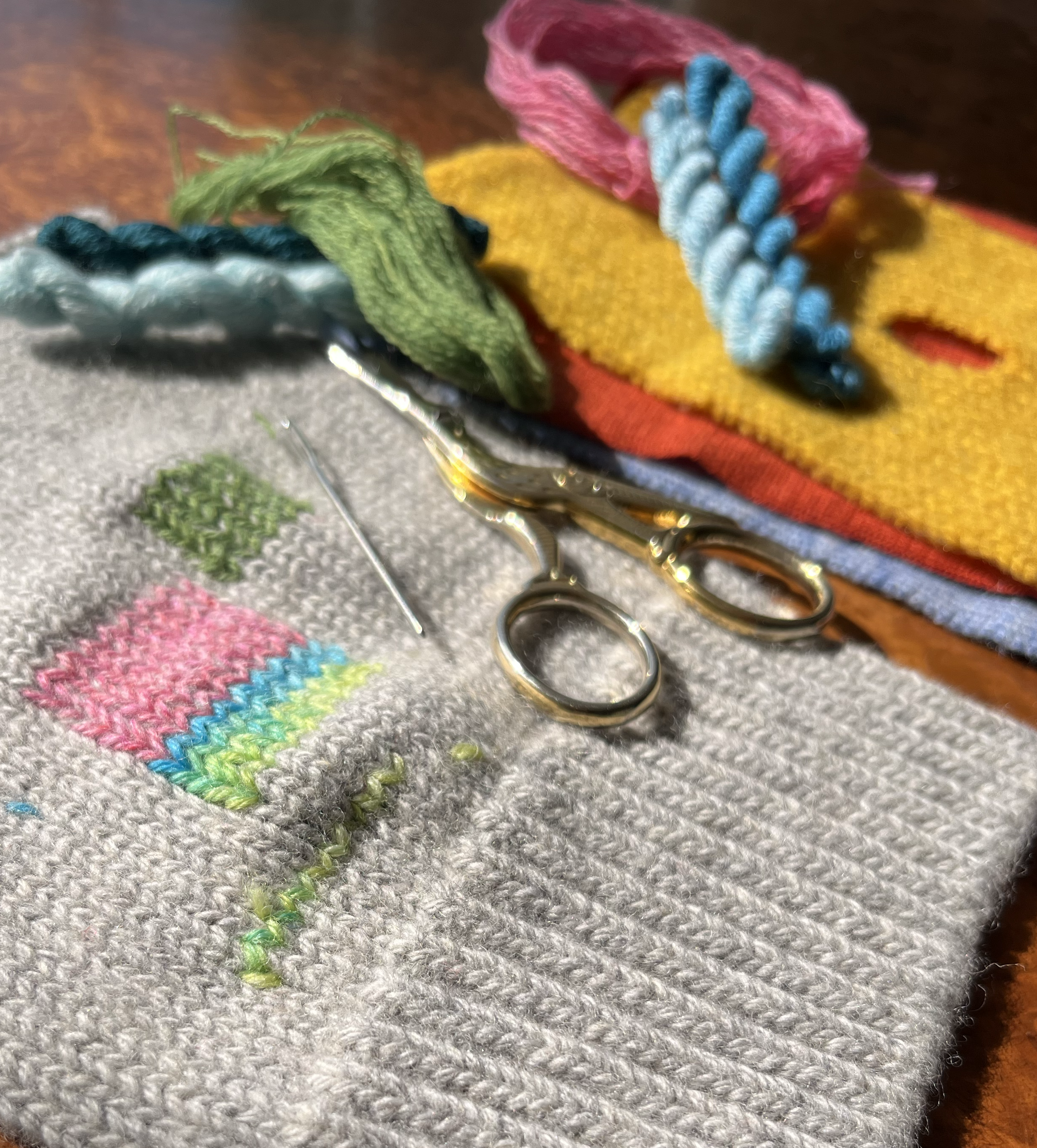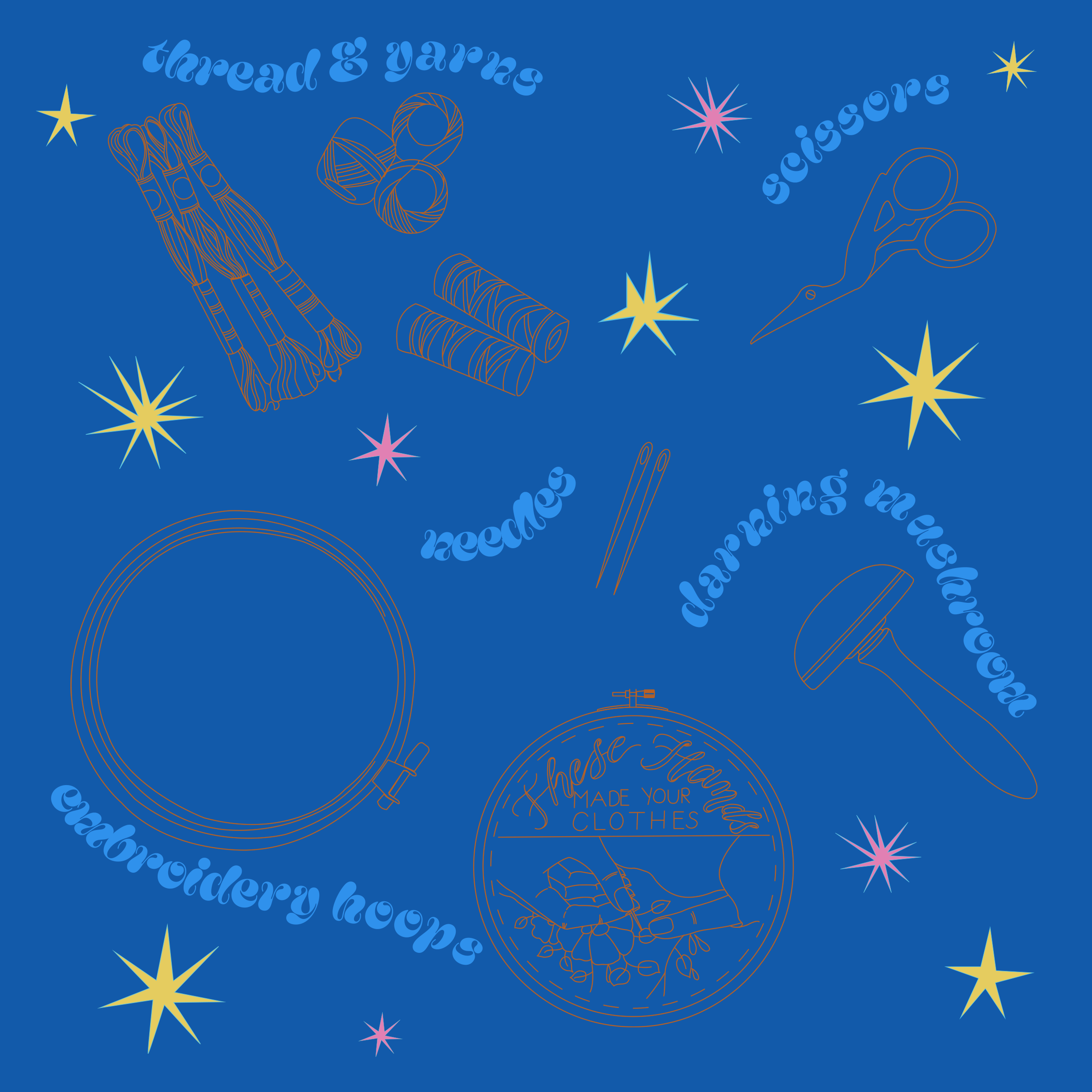Duplicate Stitch
What’s it about
the duplicate stitch. The Duplicate stitch is a decorative (embroidery) stitch that mimics the knit and purl (stockinette) stitch of knitwear. It is a great way to jazz up a piece of knitwear that you find a bit boring or lacking in the original charm it once had. It’s versatility also means it can be used to reinforce threadbare areas of your knitwear such as you may find on the elbows of your favourite jumper.
In this creative hub post you will learn how to create this stitch including giving you information on the tools and materials you need.
In the spirit of circularity, we will consider the lifecycle and material compatibility.

Learn the stitch
Watch the above video and follow along to learn the duplicate stitch.
Tools & materials
These are the tools you need;
yarn ~ You need to choose the right yarn weight (size of yarn) that matches the yearn in the knitwear you want to decorate. When buying wool yarn, you can usually find the yarn size on the packaging.
Circularity Pro Tip - remember, your knitwear could be made with materials such as wool, cotton or acrylic, for material compatibility and end of life recyclability, make sure to choose a cotton yarn, if embroidering cotton knitwear, a wool yarn if embroidering a woollen jumper, acylic yarn if decorating acrylic knitwear and so on. You get the gist!
Embroidery hoop ~ to keep the tension or
DArning mushroom ~ which does the same job as an embroidery hoop.
Needles ~ You will need darning needles. Darning needles are bigger than embroidery or regular needles, but you still need to choose the right size for your yarn weight.
Little scissors or snips ~ These are essential!
These three strategies are really important to think about when designing for circularity. You can learn more about them here.
For now though as we looking at the duplicate stitch, we are going to focus on mono-cycle.
Mono- Cycle and the Duplicate stitch.
We can design products made entirely of materials suitable for the same cycle (i.e Bio-cycle or technical cycle or a combination of both). For instance when designing a cotton jacket - this would mean that we use threads, trims, buttons and care labels that match the main material of the jacket (i.e cotton) and its recycling cycle. In the case of the cotton jacket that would fit into a bio-cycle or with the advancement of new regenerative textiles, a combination of both a technical or bio-cycle.
this makes sense when considering using the Duplicate stitch as a decorative method. The Duplicate stitch is almost always used on knitwear. Knitwear is usually made with wool, acrylic, cotton or man-made natural fibres. To ensure the knitwear can be recycled at the end of use -
Main piece material: Check what your knitwear is made of - is it wool, acrylic or cotton?
Yarn choice: Chose to embroider with the same yarn as the main piece.
Trims material choice: If adding a beads or buttons, choose materials that match the recycling cycle of the main piece.
For example -
If using the duplicate stitch on a woolen knitwear, stitch with wool yarn and if using trims use bio-based materials
Circularity quickfire
Here At Studio Erskine’s circular Design Studio, we are super crazy about circularity. Can you tell? When we create these open source databases, we want to give you the super stylish fashion enthusiast all the information around circularity and sustainability so you feel more confident to participate in upcycling and mending your clothes.
So when embroidering your garments with Duplicate stitch, you can participate in circularity and garment longevity by considering what materials you are working with, how they are compatible and what would eventually happen when the garment gets to its end of life.
Why are we so bothered about this? ~ and why you should be too
Well, thinking about material circularity allows us to think about how a garment can be used, mended or up-cycled for longevity and the for cyclability or even better regeneration at the end of life.
Longevity ~ If you are embroidering your garments with the duplicate stitch, pat yourself on the back, because babes, you are half-way there on the road to garment longevity babay! Woo hoo!
Cyclabitity ~ Now this is where it get a little bit technical, but hold your horses, it ain’t that hard. To make life easier for the garment, it’s best to consider if the materials, trims and design method you are using includes any one of these cycle strategies
Mono-cycle
Disassembly
Biological & Technical cycle (or combination of both)
Designing your own Duplicate Stitch PAtterns
The duplicate stitch is so versatile in that you can design patterns and shapes on your plain knitwear. you can download these patterns or you can create your own.







